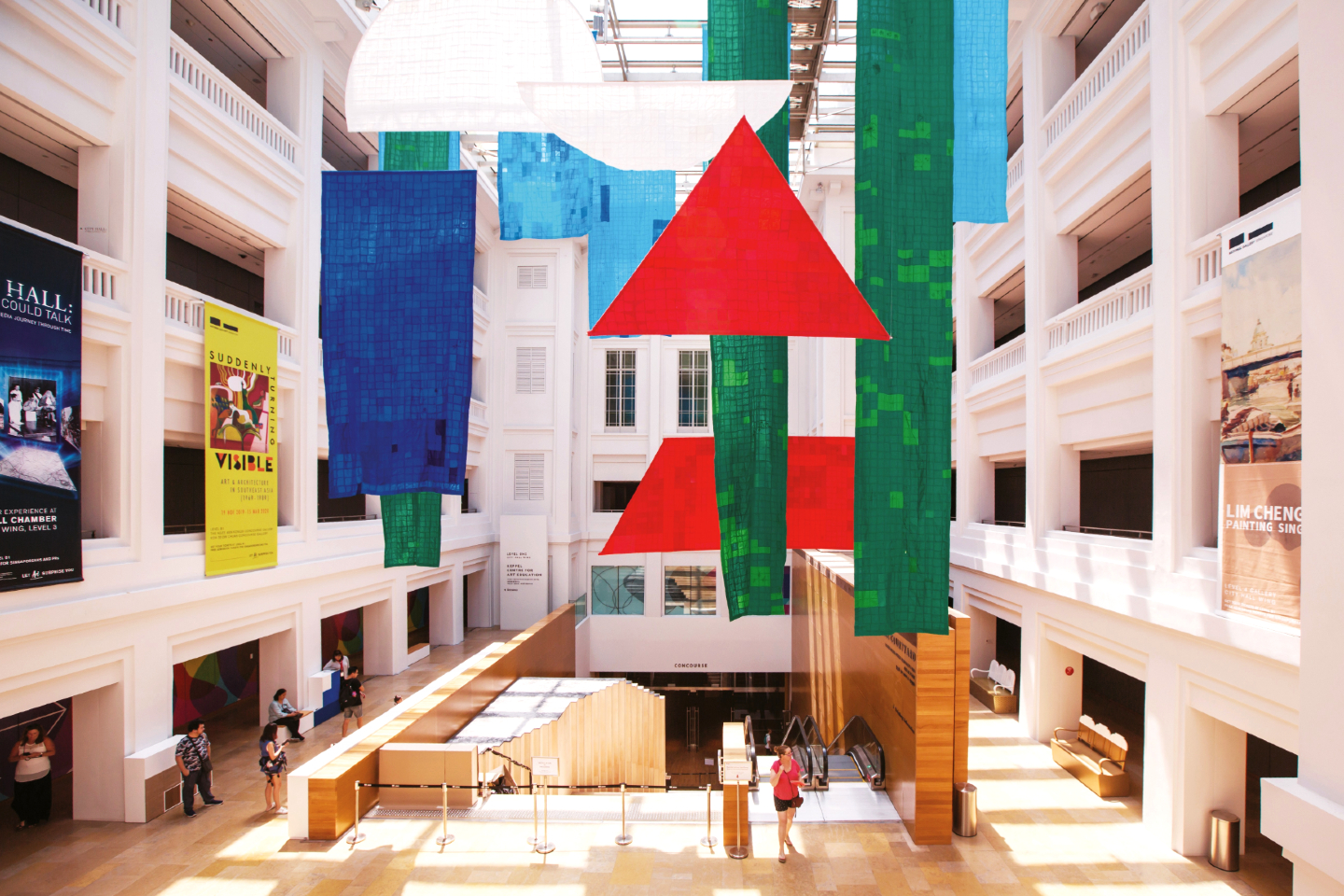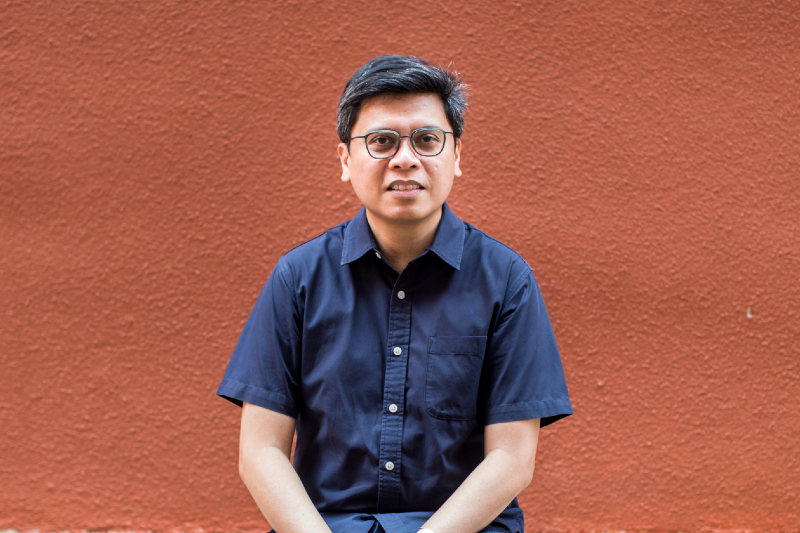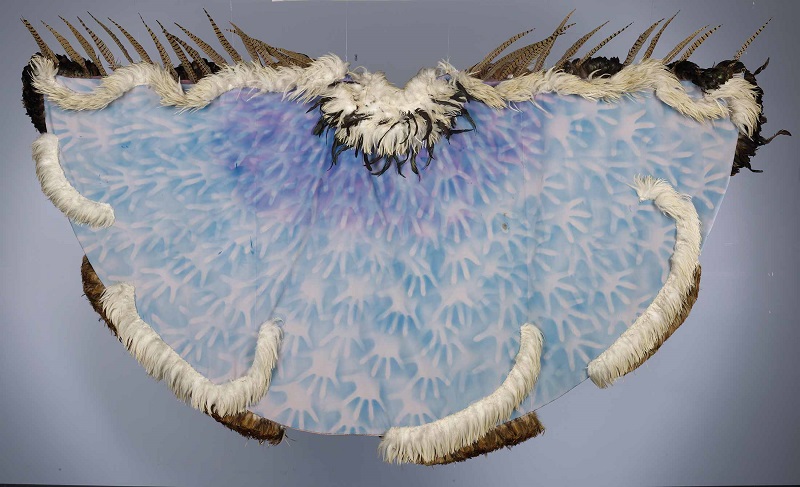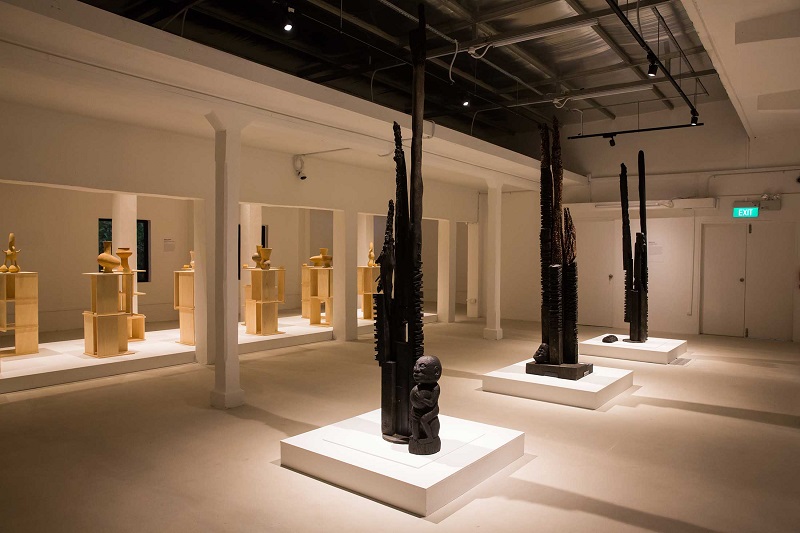
In The Skin of a Tiger: Monument to What We Want (Tugu Kita) by Sharon Chin (Photo: Singapore Art Museum)
Why should one go to an art biennale? I found myself asking this question as I meandered through the National Gallery of Singapore (NGS), one of the main sites of the recently opened Singapore Biennale 2019.
Larger than ever in scale, with 77 artists or collectives from 36 countries across 11 venues, the sixth edition of the biannual art showcase organised by the Singapore Art Museum — the country’s foremost contemporary art institution — is definitely ambitious.
After all, Patrick Flores is at the helm. The art historian and professor of Art Studies at University of the Philippines’ curatorial work and academic writings are well-regarded in the Asian contemporary art world and beyond, though they are equally well known for being challenging to digest.
patrick_flores._courtesy_of_singapore_art_museum.jpg

He has brought that flair to this biennale, which is titled Every Step in the Right Direction. The line is taken from a failed 1935 peasant uprising in Cabuyao, the Philippines, against American oppression, which led to terrible bloodshed. Years later, the woman leader of the rebellion, Salud Algabre, said these famous words: “No uprising fails; each one is a step in the right direction.”
Borrowing that sentiment, it would seem Flores and his team of six curators — all below the age of 40 — intend for the biennale to be a call to action, to lay bare the world’s current reality through art. And, by inviting the public to engage in artistic exploration, it is in the hopes of awakening them to the changes needed or what could be done to, well, make our world a better place.
This is to be accomplished through the “joy of experiencing art”; to “value the moment of contemplation”, according to the biennale’s introductory statement. But as I stood in NGS looking at the late Filipino-American modernist artist Carlos Villa’s works that span 1967 to 2006, I begin to wonder. Flores explains the significance of featuring Villa as his contribution to the conversation about multiculturalism and, on a broader note, as a way to interact with the modern art collections abundant within NGS. I realised this would be a challenge for the non-art public the biennale supposedly seeks to draw.
carlos_villa.jpg

The biennale says it is “a cross between a seminar and a festival, an archive and a workshop”, but the journey more often feels like a master class, in that it requires some prior knowledge.
Flores is unapologetic about the academic and archival undertones, though he acknowledges how they can come across. Commenting on the broadness of the overall theme, he says, “It was my proposal to stay away from a theme. When you approach an artist with one, they tend to simply illustrate it. The audience, too, look for an illustration. The theme tends to capture instead of release the potential of contemporary art, so I put in place a sort of proposition or methodology instead”.
Like the professor that he is, the artistic director is empathetic but firm about the audience’s role. “Of course, you are right. Contemporary art is a difficult language. It is dense and requires patient explication. But one cannot be too didactic; you cannot simplify it too much, or dumb it down. You can make it accessible, you can maybe drop clues or hints, or provide different entry points, and through those entry points, they can find a way on their own — like coordinates given to navigate the work.
“As curators, we want to give context. And context can be assessed through archival material. Artists today also engage in research, it is part of their practice and process. There is a shift from just using [art] as a form of expression, it goes beyond that now,” says Flores.
celine_condorelli_spatial_composition_13_2019_installation_view_image_courtesy_of_singapore_art_museum.jpg

He cites the example of London-based French artist Céline Condorelli’s “newspapers” as one of the ways the curators have made relevant archival material accessible. If one goes around NGS, you will see yellow lounge chairs arranged to look like an installation. But they are meant for sitting. Hanging on them or stacked nearby would be Condorelli’s Spatial Compositions 13, which act as “support structures” to invite people to gather, much like community folk would in public reading corners. In the papers are archives of five artists: Raymundo Albano, Ha Bik Chuen, Ismail Zain, Judy Freya Sibayan and Carlos Villa.
Still, there can be layers to experiencing art. Flores is hopeful that even if the viewer starts with just a visual or aesthetic experience, it can be an investment to be built upon. A good starting point may be Singaporean artist Amanda Heng’s Every Step Counts, at the Esplanade, where a long tunnel shows a projection of her walking, a key element of her art practice. Offering a direction and a body — hers — in movement, the work reflects the biennale title in a most literal way.
While mid-way through the Gillman Barracks — the other venue apart from NGS where most of artworks are exhibited — the question comes back to my mind: What is the value of visiting an art biennale? What are we looking for?
There are some answers to be found in the Level 3 gallery space of Block 9, where a few works were shown. Or, at least a breadth of perspectives, starting with Singapore’s Khairullah Rahim and his corridor installation, Intimate Apparitions (2019). The glittery items created from everyday objects consider the urban connotations of “public” and “private” spaces, and how those definitions change when it comes to minorities and non-mainstream communities.
khairullah_rahim_intimate_apparitions_2019._image_courtesy_of_singapore_art_museum.jpg

Just inside, the image of a giant snail dominates one corner, as Taiwan’s Chang En-Man’s Snail Paradise (2019) retraces the arrival of the Giant African Landsnail in Taiwan, where it eventually became a starring delicacy of the country’s indigenous cuisines. We view some of these recipes on video, while a map above shows that the snail’s last point of departure before arriving in Taiwan was, incidentally, Singapore.
Across the room, Busui Ajaw, who is from the Akha community in Thailand, presents Ajaw Jaw Bah (2019). The self-taught artist displays a series of colourful paintings depicting the tragic story of an intelligent Akha prince, as well as that of Amamata, the first mother in Akha culture. These stories have been passed down orally through generations, and Ajaw now brings them to light visually as a traditional spirit gate in the middle carved from wood welcomes visitors to the mythical world.
On Level 2 of the same block, London-born Singapore-based artist Zai Tang’s Escape Velocity III (2019) features field recordings of wildlife he captured in Mandai, an area in Singapore that is under threat of development for the purpose of eco-tourism. The two-part recording — one of which sees Tang manipulating the original recordings to create a new composition — underscores the element of intervention in nature.
The space in Block 22 continues the conversation of man’s role in the environment with works by Robert Zhao Renhui, who documented the forested area surrounding Gillman itself. Its title, Queen’s Own Hill and its Environs (2019), is the former name of the area. Bruneian artist Zakaria Omar’s Fossils of Shame: The Pillars (2010, 2019) displays driftwood taken from old stilt houses demolished to make way for new waterfront attractions. The act of excavating and reclaiming the driftwood is akin to an archaeological exercise, symbolising Zakaria’s view of them as heirlooms for future generations.
fossils_of_shame.jpg

New perspectives aside, there are insights into geography, the environment, culture and history. And, yes, given a good go, there can be the joy of discovery, of understanding, or if not, of wondering. Of course, this comes with a reality check of the world we live in.
Flores nods when this is brought up. “That is why we are not here to make it easy for people. Because it is a difficult time in the world, and the complexity has to be acknowledged, there should be labour involved in the experience of contemporary art. If one were to merely be a consumer, then maybe this is not the place for that. It is the responsibility of the curator and artist to invite the audience to be part of it, to activate them.”
But, ultimately, is there hope for change? Flores is convinced there is. “Artists respond to what is happening around us. It goes beyond criticism and critiquing. Yes, there is a moment of acknowledging what is wrong, but then, there is also another moment to deconstruct and reconstruct. What next? What about me? What am I going to do? What is my response? My responsibility? I think people have to look and decide for themselves. We are in a long-haul struggle, [the process of change] always has to begin with us first.” Sounds like a step in the right direction, daunting as it may be.
Singapore Biennale 2019 is on until March 22, 2020. Buy tickets here. For more information, see here.
This article first appeared on Dec 16, 2019 in The Edge Malaysia.


